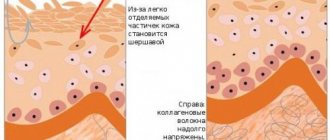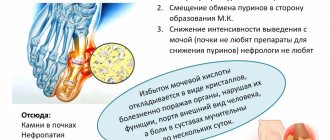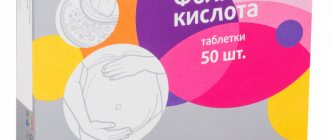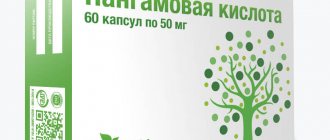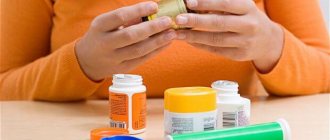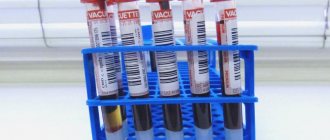Pharmacodynamics and pharmacokinetics
Acetylsalicylic acid - what is it?
Acetylsalicylic acid is Aspirin , a salicylic ester of acetic (ethanoic) acid.
The formula of acetylsalicylic acid is (ASA) - C₉H₈O₄.
OKPD code 24.42.13.142 ( acetylsalicylic acid mixed with other drugs).
Receiving ASA
In the production of ASA, the method of esterification of salicylic acid with ethanoic acid is used.
Pharmacodynamics
By suppressing enzyme , it disrupts the production of prostaglandins and ATP production. It has antipyretic and anti-inflammatory activity platelet aggregation .
The analgesic effect is due to both central and peripheral effects. In feverish conditions, it reduces the temperature by affecting the thermoregulation center.
Platelet aggregation and , as well as thrombus formation , are reduced due to the ability of ASA to suppress the synthesis of thromboxane A2 (TXA 2) in platelets. Inhibits the synthesis of prothrombin blood coagulation factor II ) in the liver and at a dose exceeding 6 g/day. — increases PTV.
Pharmacokinetics
Absorption of the substance after taking the drug orally is almost complete. The half-life of unchanged ASA is no more than 20 minutes. TCmax of ASA in blood plasma is 10-20 minutes, total salicylate formed as a result of metabolism is from 0.3 to 2.0 hours.
About 80% of acetylsalicylic and salicylic acids bound to albumin . Biological activity is maintained even when the substance is in protein-bound form.
Metabolized in the liver. Excreted by the kidneys. The pH of urine affects excretion: when it is acidified, it decreases, and when it is alkalized, it increases.
Pharmacokinetic parameters depend on the dose taken. Elimination of a substance is nonlinear. Moreover, in children of the 1st year of life, in comparison with adults, it proceeds much more slowly.
Buy Acetylsalicylic acid FST tablets 500 mg No. 10 in pharmacies
Trade name:
Acetylsalicylic acid
International nonproprietary or generic name:
Acetylsalicylic acid
Dosage form:
Compound
Active ingredient: acetylsalicylic acid - 500.0 mg.
Excipients: potato starch - 72.1 mg, citric acid - 0.2 mg, stearic acid - 6.0 mg, talc - 12.7 mg, colloidal silicon dioxide (Aerosil) 3.0 mg, sodium carboxymethyl starch (sodium starch glycolate) - 6.0 mg.
Description:
round flat-cylindrical tablets of white or almost white color, slightly marbled.
Pharmacotherapeutic group:
non-steroidal anti-inflammatory drug
Pharmacological properties
Pharmacodynamics
The drug has analgesic, antipyretic and anti-inflammatory effects. The mechanism of action of acetylsalicylic acid is based on inhibition of the activity of the cyclooxygenase enzymes COX-1 and COX-2, which are involved in the synthesis of prostaglandins, prostacyclins and thromboxane. As a result, the synthesis of prostaglandins, which ensures the formation of edema and hyperalgesia, is disrupted. A decrease in the content of prostaglandins (mainly E 1) in the thermoregulation center leads to a decrease in body temperature due to dilation of skin vessels and increased sweating processes. The analgesic effect is due to both central (influence on the centers of pain sensitivity) and peripheral (decreasing the algogenic activity of bradykinin) action. The anti-inflammatory effect of the drug is due to a decrease in the synthesis of prostaglandins, a decrease in capillary permeability, a decrease in hyaluronidase activity, and a limitation of the energy supply to the inflammatory process by inhibiting the formation of adenosine triphosphoric acid.
Reduces platelet aggregation and adhesion and inhibits thrombus formation by suppressing the synthesis of thromboxane A2 in platelets.
Blockade of COX-1 in the gastric mucosa leads to inhibition of the synthesis of gastroprotective prostaglandins, which can contribute to ulceration of the gastric mucosa and subsequent bleeding.
Pharmacokinetics
When taken orally, absorption is complete. During absorption, it undergoes systemic elimination in the intestinal wall and in the liver (deacetylated). The resorbed part is quickly hydrolyzed by special esterases, so the half-life of the drug is no more than 15-20 minutes.
It circulates in the body (75-90% due to albumin) and is distributed in tissues in the form of salicylic acid anion.
The time to reach maximum plasma concentration is 2 hours. Serum levels of salicylates are highly variable. Salicylates easily penetrate many tissues and body fluids, incl. into the cerebrospinal, peritoneal and synovial fluids. Penetration into the joint cavity accelerates in the presence of hyperemia and edema and slows down in the proliferative phase of inflammation. Salicylates are found in small quantities in brain tissue, traces in bile, sweat, and feces. When acidosis occurs, most of the salicylic acid is converted into non-ionized acid, which penetrates well into tissues, incl. into the brain. It quickly passes through the placenta and is excreted in small quantities in breast milk.
Metabolized primarily in the liver to form 4 metabolites found in many tissues and urine.
It is excreted primarily through the active section in the renal tubules unchanged (60%) and in the form of metabolites.
The excretion of unchanged salicylate depends on the pH of the urine (with alkalinization of the urine, the ionization of salicylates increases, their reabsorption worsens and excretion increases significantly). The rate of elimination depends on the dose: when taking small doses, the half-life of the drug is 2-3 hours, with increasing doses it can increase to 15-30 hours.
In newborns, salicylates can displace bilirubin from its binding to albumin and contribute to the development of bilirubin encephalopathy. Elimination of salicylates in newborns is much slower than in adults.
Indications for use
Symptomatic treatment of pain, headache (including withdrawal symptoms), toothache, sore throat, migraine pain, back and muscle pain, joint pain, menstrual pain.
Increased body temperature during colds and other infectious and inflammatory diseases (in adults and children over 15 years of age).
Contraindications
- Hypersensitivity to acetylsalicylic acid and other non-steroidal anti-inflammatory drugs or other components of the drug; - erosive and ulcerative lesions of the gastrointestinal tract (in the acute phase), gastrointestinal bleeding; - bronchial asthma induced by taking salicylates and non-steroidal anti-inflammatory drugs; - hemorrhagic diathesis; - combined use of methotrexate at a dose of 15 mg per week or more; - pregnancy, breastfeeding period; - a combination of bronchial asthma, recurrent polyposis of the nose and paranasal sinuses and intolerance to acetylsalicylic acid; - children under 12 years of age (for this dosage form)
The drug is not prescribed to children under 15 years of age with acute respiratory diseases caused by viral infections due to the risk of developing Reye's syndrome (encephalopathy and acute fatty liver degeneration with acute development of liver failure).
Carefully
With concomitant therapy with anticoagulants, gout, gastric ulcer and/or duodenal ulcer (history), including chronic or recurrent peptic ulcer, or episodes of gastrointestinal bleeding; renal and/or liver failure, glucose-6-phosphate dehydrogenase deficiency; hyperuricemia, bronchial asthma, chronic obstructive pulmonary disease, hay fever, nasal polyposis, drug allergies, concomitant use of methotrexate at a dose of less than 15 mg/week, pregnancy.
Use during pregnancy and breastfeeding
The use of acetylsalicylic acid is contraindicated in the first and third trimesters of pregnancy. The use of acetylsalicylic acid in the first trimester of pregnancy, due to its teratogenic effect, leads to an increase in the incidence of fetal developmental defects (cleft palate, cardiovascular anomalies), in the third trimester it causes inhibition of labor, premature closure of the ductus arteriosus in the fetus, increased bleeding in mother and fetus. Administration immediately before birth may cause intracranial hemorrhage, especially in premature infants.
The use of the drug in the second trimester of pregnancy is contraindicated due to the impossibility of implementing its dosage regimen in this dosage form.
Breastfeeding period
Salicylates and their metabolites pass into breast milk. During treatment with the drug, breastfeeding should be stopped.
Directions for use and doses
Orally, adults and children over 12 years of age: single dose is 0.5 g, maximum single dose is 1.0 g (2 tablets of 0.5 g), maximum daily dose is 3.0 g (6 tablets of 0.5 g .
Directions for use: the drug should be taken after meals with water, milk or alkaline mineral water.
Frequency and time of administration: a single dose, if necessary, can be taken 3-4 times a day with an interval of at least 4 hours. Regular adherence to the drug regimen allows you to avoid a sharp increase in temperature and reduce the intensity of pain.
The duration of treatment (without consulting a doctor) should not exceed 5 days when prescribed as an analgesic and more than 3 days when prescribed as an antipyretic.
Side effect
From the gastrointestinal tract: loss of appetite, diarrhea; abdominal pain, heartburn, nausea, vomiting, obvious (vomiting with blood, tarry stools) or hidden signs of gastrointestinal bleeding, which can lead to iron deficiency anemia, erosive and ulcerative lesions (including perforation) of the gastrointestinal tract, isolated cases of liver dysfunction (increased liver transaminases).
From the central nervous system: dizziness, tinnitus (usually signs of overdose).
From the hematopoietic system: increased risk of bleeding, which is a consequence of the effect of acetylsalicylic acid on platelet aggregation, thrombocytopenia, anemia, leukopenia.
Allergic reactions: skin rash, anaphylactic reactions, bronchospasm, Quincke's edema.
From the genitourinary system: impaired renal function.
Others: when taken as an antipyretic drug, Reye's syndrome (encephalopathy and acute fatty liver with rapid development of liver failure).
Overdose
Symptoms
Moderate overdose: nausea, vomiting, tinnitus, hearing loss, headache, dizziness and confusion.
Severe overdose: fever, hyperventilation, ketoacidosis, respiratory alkalosis, metabolic acidosis, coma, cardiogenic shock, respiratory failure, severe hypoglycemia.
Treatment: hospitalization, gastric lavage, activated charcoal, monitoring of acid-base balance, alkaline diuresis in order to obtain a urine pH between 7.5-8 (forced alkalinization of urine is considered achieved if the concentration of salicylate in the blood plasma is more than 500 mg/ l (3.6 mmol/l) in adults or 300 mg/l (2.2 mmol/l) in children), hemodialysis, replacement of fluid loss, symptomatic therapy.
Interaction with other drugs
Combined use:
- with methotrexate at a dose of 15 mg per week or more: the hemolytic cytotoxicity of methotrexate increases (renal clearance of methotrexate decreases and methotrexate is replaced by salicylates in connection with blood plasma proteins); - with indirect anticoagulants and heparin: the risk of bleeding increases due to inhibition of platelet function, damage to the mucous membrane of the gastrointestinal tract, displacement of anticoagulants (oral) from connection with blood plasma proteins; - with other non-steroidal anti-inflammatory drugs: as a result of synergistic interaction, the risk of ulcers and gastric bleeding increases; - with uricosuric drugs. for example benzbromarone: reduces the uricosuric effect; - with digoxin: digoxin concentration increases due to decreased renal excretion; - enhances the effects of oral hypoglycemic drugs; - with thrombolytic drugs: the risk of bleeding increases; - with systemic glucocorticosteroids. excluding hydrocortisone, used as replacement therapy for Addison's disease: when using glucocorticosteroids, the level of salicylates in the blood decreases due to increased excretion of the latter; - with angnotensin-converting enzyme inhibitors: glomerular filtration is reduced due to inhibition of prostaglandins and, as a result, the antihypertensive effect is reduced; - with valproic acid: the toxicity of valproic acid increases; - with ethanol (alcoholic drinks): the risk of damaging the gastrointestinal mucosa increases and the risk of bleeding in the gastrointestinal tract increases; - enhances the effects of narcotic analgesics, thrombolytics and platelet aggregation inhibitors, sulfonamides (including co-trimoxazole); - increases the concentration of barbiturates and lithium salts in plasma; - antacids containing magnesium and/or aluminum slow down and impair the absorption of acetylsalicylic acid; - myelotoxic drugs increase the manifestations of hematotoxicity of the drug; - enhances the effects of triiodothyronine; - reduces the effect of antihypertensive drugs, diuretics (spironolactone, furosemide).
Glucocorticoids, ethanol and ethanol-containing drugs increase the damaging effect of acetylsalicylic acid on the mucous membrane of the gastrointestinal tract and increase the risk of gastrointestinal bleeding.
special instructions
Acetylsalicylic acid may cause bronchospasm, an attack of bronchial asthma or other hypersensitivity reactions. Risk factors are the presence of bronchial asthma, nasal polyps, fever, chronic bronchopulmonary diseases, a history of allergies (allergic rhinitis, skin rashes). Acetylsalicylic acid may increase the tendency to bleeding, which is associated with its inhibitory effect on platelet aggregation. This should be taken into account when surgical interventions are necessary, including minor interventions such as tooth extraction. Before surgery, to reduce bleeding during surgery and in the postoperative period, you should stop taking the drug 5-7 days in advance and notify the doctor.
Children with acute viral infections should not be prescribed medications containing acetylsalicylic acid, since in the case of a viral infection the risk of Reye's syndrome increases. Symptoms of Reye's syndrome are prolonged vomiting, acute encephalopathy, and liver enlargement.
If it is necessary to use the drug during lactation, breastfeeding should be discontinued.
Acetylsalicylic acid reduces the excretion of uric acid from the body, which can cause an acute attack of gout in predisposed patients.
Impact on the ability to drive vehicles and machinery
During the treatment period, care must be taken when driving vehicles and engaging in potentially hazardous activities that require increased concentration and speed of psychomotor reactions, since the use of the drug can in rare cases cause dizziness.
Release form
Tablets 500 mg.
10 tablets in blister-free or blister packs;
1, 2, 3, 4 or 5 blister packs with instructions for use in a cardboard pack. It is allowed to place contour cell and cell-free packages in group packaging with an equal number of instructions.
Storage conditions
Store at a temperature not exceeding 25C. Keep out of the reach of children.
Best before date
4 years. After the expiration date, do not use the drug.
Vacation conditions
Over the counter.
Indications for use: what do Acetylsalicylic acid tablets help with?
Indications for use of Acetylsalicylic acid are:
- febrile conditions in diseases of an infectious-inflammatory nature;
- rheumatoid arthritis;
- rheumatism;
- inflammatory damage to the myocardium , caused by an immunopathological reaction;
- pain syndrome of various origins, including headache and toothache (including headache associated with alcohol withdrawal syndrome), pain in joints and muscles, neuralgia, migraines , algodismenorrhea .
Also, aspirin (or acetylsalicylic acid) is used for prophylactic purposes in case of threat of thrombosis , thromboembolism , myocardial infarction (in case of myocardial infarction, the drug is prescribed for secondary prevention).
How to take acetylsalicylic acid for children
The optimal dose for children is determined taking into account weight (approximately 100-120 mg per 1 kg per day). For active rheumatism, it should be taken up to 5 times a day. After 10-15 days from the start of the therapeutic course, the dosage can be reduced by 1.5 times. Treatment continues for up to 5-6 weeks.
In case of fever and various pains, the child can be given 15 mg per 1 kg up to 5 times a day.
You should not give your child aspirin if there is a high body temperature caused by a viral infection. This can trigger the development of a serious disease - Reine's syndrome, which can threaten the child's life.
The active substance penetrates perfectly into body tissues and fluids.
Contraindications
Taking ASA is contraindicated in:
- “aspirin” asthma;
- during the period of exacerbation of erosive and ulcerative lesions of the digestive canal ;
- stomach/intestinal bleeding;
- vitamin deficiency K;
- hemophilia , hypoprothrombinemia , hemorrhagic diathesis ;
- G6PD enzyme deficiency
- portal hypertension;
- renal/liver failure;
- aortic dissection;
- during treatment with Methotrexate (if the weekly dose of the drug exceeds 15/mg);
- gouty arthritis, gout;
- pregnancy (absolute contraindications are the first three and last three months);
- breastfeeding;
- hypersensitivity to ASA/salicylates.
Side effects
Side effects of ASA treatment may include:
- nausea;
- gastralgia;
- anorexia;
- allergic reactions;
- diarrhea;
- thrombocytopenia;
- erosive and ulcerative lesions of the digestive canal;
- renal and/or liver failure.
With prolonged use, tinnitus appears, hearing acuity decreases, vision is impaired, dizziness occurs and, when taking high doses, headaches. Bleeding, hypocoagulation , vomiting, and bronchospasm .
Side effects
Despite its apparent safety, the drug has a wide range of side effects, including fatal ones. Most often they appear with incorrect dosage and long-term use:
- allergic reactions, manifested by a rash, Quincke's edema, asthma attack;
- thrombocytopenia;
- dyspeptic symptoms (heartburn, abdominal pain, nausea, diarrhea);
- anemic syndrome;
- headache;
- development of ulcerative lesions of the gastrointestinal tract (GIT);
- bleeding from the gastrointestinal tract (especially when using rectal suppositories);
- liver dysfunction;
- hearing impairment;
- diabetes mellitus (due to damage to the insulin apparatus and impaired glycogen formation).
- aspirin asthma (manifested by a triad of symptoms: polypous sinusitis, asthma attacks and intolerance to all non-steroidal anti-inflammatory drugs).
The most severe complication that can be associated with taking Aspirin is considered Reye's (or Reye's) syndrome. This pathology occurs in children under 15 years of age due to the use of acetylsalicylic acid during fever of viral or bacterial origin. In this case, cerebral edema develops, which leads to encephalopathy, as well as acute liver failure.
Manifested by the following symptoms:
- sudden nausea and incessant vomiting (this is the very first sign, when it appears, you need to call an ambulance);
- disturbances of consciousness of varying degrees - from mild stupor to coma;
- choking, convulsions, jaundice;
- signs of liver failure are observed in the blood (increased transaminases, bilirubin).
Despite the fact that this is a fairly rare disease (1-2 per 100,000), the syndrome is characterized by a very high mortality rate - on average about 30% (with the development of coma - 80%).
Acetylsalicylic acid, instructions for use (Method and dosage)
For active rheumatism, adult patients are prescribed 5 to 8 g of ASA per day. For a child, the dose is calculated depending on weight. As a rule, it varies from 100 to 125 mg/kg/day. Frequency of use: 4-5 rubles/day.
1-2 weeks after the start of the course, the dose for a child is reduced to 60-70 mg/kg/day; for adult patients, the dosage remains the same. Treatment should be continued for up to 6 weeks.
According to the instructions for use of Acetylsalicylic acid, the drug should be discontinued gradually over 1-2 weeks.
Acetylsalicylic acid for headaches and as a remedy for fever is prescribed in lower dosages. Thus, for pain and feverish conditions, the dose per 1 dose for an adult is from 0.25 to 1 g with a frequency of use from 4 to 6 times per day.
It should be remembered that for headaches, ASA is especially effective if the pain is provoked by an increase in ICP (intracranial pressure).
For children, the optimal dose per dose is 10-15 mg/kg. Frequency of applications - 5 rubles/day.
Treatment should not last more than 2 weeks.
To prevent thrombosis and embolism, ASA is taken 2-3 times a day. 0.5 g each. To improve the rheological properties (to thin the blood the drug is taken for a long time at 0.15-0.25 g/day.
For a child over five years of age, a single dosage is 0.25 g, four-year-old children are allowed to be given a single dose of 0.2 g of ASA, two-year-old children - 0.1 g, one-year-old children - 0.05 g.
It is forbidden to give ASA to children for fever that rises due to a viral infection . The drug acts on the same structures of the brain and liver as some viruses, and in combination with a viral infection can provoke the development of Reye's syndrome .
Application of ASA in cosmetology
A face mask with Acetylsalicylic acid allows you to quickly relieve inflammation, reduce tissue swelling, remove redness, remove the surface layer of dead cells and clean clogged pores.
The drug dries the skin well and is perfectly soluble in fats, which makes it advisable to use it as a remedy for acne : tablets, moistened with water, are applied to inflamed elements on the face or added to face masks.
Acetylsalicylic acid for acne works well in combination with lemon juice or honey. A clay mask is also effective for eliminating skin problems.
To prepare a lemon-aspirin mask, tablets (6 pieces) are simply ground with freshly squeezed juice until smooth. Then the medicine is applied pointwise to the inflamed pimples and left on them until they dry.
A mask with honey is prepared as follows: tablets (3 pieces) are moistened with water, and then, when they dissolve, mixed with 0.5-1 teaspoon (teaspoon) of honey.
To prepare a clay mask, mix 6 crushed ASA tablets and 2 teaspoons of white/blue clay with warm water.
How to drink acetylsalicylic acid correctly
An adult patient with active rheumatism is prescribed to take about 6-7 g of ASA per day. Frequency of administration – up to 5 times a day. The duration of the treatment course is 1.5 months. Throughout the course, the dose remains unchanged.
Discontinuation of the drug in adults and children should occur gradually, over 8-12 days.
If a person suffers from headaches or has an increased body temperature, then the medicine is taken in smaller quantities. For fever and pain of various origins, it will be enough to take up to 1 g at a time. Up to 5 doses are allowed per day.
It is worth noting that aspirin will help cope with headaches if they were caused by increased intracranial pressure.
The treatment course should not last more than 14 days.
In order to prevent thrombosis, you need to drink the medicine up to 3 times a day, 0.5 g.
Overdose
Overdose can result from:
- long-term treatment with ASA;
- single administration of too high a dose of the drug.
A sign of overdose is salicylic syndrome , manifested by general malaise, hyperthermia, tinnitus, nausea, and vomiting.
Severe intoxication is accompanied by convulsions , stupor, coma , severe dehydration, non-cardiogenic pulmonary edema , renal failure , impairment of CBS, shock.
In case of an overdose of ASA, the victim should be immediately hospitalized. His stomach is washed, he is given activated carbon , and his CBS is checked.
Depending on the condition of the CBS and the balance of water and electrolytes, the administration of solutions of sodium lactate , sodium citrate and sodium bicarbonate (in the form of infusion) may be prescribed.
with alkaline diuretics is required .
In case of severe intoxication, hemodialysis ; replenish fluid loss; symptomatic treatment is prescribed.
Interaction
Increases the toxicity of barbituric drugs , valproic acid , methotrexate , the effects of oral hypoglycemic drugs, Digoxin , narcotic analgesics , Triiodothyronine , sulfonamide drugs .
Weakens the effects of diuretics (potassium-sparing and loop), antihypertensive drugs from the group of ACE inhibitors, and the effect of uricosuric drugs .
When used simultaneously with antithrombotic drugs , thrombolytics , indirect anticoagulants, it increases the risk of bleeding.
GCS enhance the toxic effect of ASA on the mucous membrane of the digestive canal, increase its clearance and reduce plasma concentration.
When used simultaneously with Li salts, it increases the plasma concentration of Li+ ions.
Strengthens the toxic effect of alcohol on the mucous membrane of the digestive canal.
special instructions
The drug should be used with caution in people with pathologies of the kidneys and liver , bronchial asthma , with increased bleeding, decompensated CHF, during treatment with anticoagulants, as well as in people with a history of erosive and ulcerative lesions of the digestive tract and/or gastric/intestinal bleeding .
Even in small doses, ASA reduces the excretion of uric acid , which can cause an acute attack of gout .
When taking high doses of ASA or needing long-term treatment with the drug, it is necessary to regularly monitor hemoglobin and see a doctor.
As an anti-inflammatory agent, use ASA at a dose of 5-8 g/day. limited due to the increased risk of adverse reactions from the gastrointestinal tract.
To reduce bleeding during surgery and in the postoperative period, salicylates should be stopped 5-7 days before surgery.
When taking ASA, you should remember that this drug can be taken for pain relief for no more than 7 days without consulting a doctor. As an antipyretic, ASA is allowed to be taken for no more than 3 days.
Chemical properties of the substance
When ASA crystallizes, colorless needles or monoclinic polyhedra with a slightly sour taste are formed. The crystals are stable in dry air, but with increasing humidity they gradually hydrolyze to salicylic and acetic acids.
The substance in its pure form is a white crystalline powder and practically odorless. The appearance of an acetic acid odor is evidence that the substance has begun to hydrolyze.
ASA undergoes esterification under the influence of alkaline bicarbonates, alkaline hydroxides, and also in boiling water.
ASA is poorly soluble in water, soluble in chloroform and ether, and easily soluble in 96% ethanol. The solubility of ASA in water/aqueous media is strongly influenced by the pH level: the higher the alkalinity of the solvent, the more easily the substance dissolves.
Acetylsalicylic acid (Acidum acetylsalicylicum)
The likelihood of developing gastropathy caused by taking non-steroidal anti-inflammatory drugs is reduced when administered after meals, using tablets with buffer additives or coated with a special enteric coating. The risk of hemorrhagic complications is considered to be lowest when used in doses <100 mg per day.
Anticoagulants, coumarin and indandione derivatives, heparin, thrombolytic drugs (alteplase, anistreplase, streptokinase, prourokinase), platelet aggregation inhibitors - increase the risk of bleeding.
Vancomycin - increases the risk of ototoxicity.
Methotrexate - the risk of developing side effects of the latter increases.
Non-steroidal anti-inflammatory drugs - increases the risk of severe bleeding (including gastrointestinal) and other side effects. Acetylsalicylic acid may reduce plasma concentrations of indomethacin and piroxicam.
Probenecid, sulfinpyrazone - increase the toxicity of acetylsalicylic acid.
Drugs that alkalinize urine (carbonic anhydrase inhibitors, citrates, sodium bicarbonate, antacids, especially calcium and/or magnesium-containing ones), with prolonged use, accelerate the excretion and reduce the effectiveness of acetylsalicylic acid.
Cefamandole, cefoperazone, cefotetan, plicamycin, valproic acid - the risk of bleeding and valproic acid toxicity increases.
Ciprofloxacin, lomefloxacin, norfloxacin, ofloxacin, enoxacin, itraconazole, ketoconazole, tetracycline - acetylsalicylic acid reduces their absorption and effectiveness. The reception should be separated in time.
When used simultaneously, antacids containing magnesium and/or aluminum hydroxide slow down and reduce the absorption of acetylsalicylic acid.
With the simultaneous use of calcium channel blockers, drugs that limit the intake of calcium or increase the excretion of calcium from the body, the risk of bleeding increases.
When used simultaneously with glucocorticosteroids, the risk of ulcerogenic effects and gastrointestinal bleeding increases.
With simultaneous use, the effectiveness of diuretics (spironolactone, furosemide) decreases.
When used simultaneously with gold preparations, acetylsalicylic acid can induce liver damage.
With the simultaneous use of acetylsalicylic acid and sodium alendronate, severe esophagitis may develop.
With simultaneous use of griseofulvin, the absorption of acetylsalicylic acid may be impaired.
A case of spontaneous hemorrhage into the iris was described when taking Ginkgo biloba extract during long-term use of acetylsalicylic acid at a dose of 325 mg per day. It is believed that this may be due to an additive inhibitory effect on platelet aggregation.
With simultaneous use of dipyridamole, it is possible to increase the Cmax of salicylate in the blood plasma and the area under the concentration-time kinetic curve.
When used simultaneously with acetylsalicylic acid, the concentrations of digoxin, barbiturates and lithium salts in the blood plasma increase.
With the simultaneous use of salicylates in high doses with carbonic anhydrase inhibitors, salicylate intoxication is possible.
Acetylsalicylic acid in doses less than 300 mg per day has a minor effect on the effectiveness of captopril and enalapril. When using acetylsalicylic acid in high doses, the effectiveness of captopril and enalapril may be reduced.
With simultaneous use, caffeine increases the rate of absorption, plasma concentration and bioavailability of acetylsalicylic acid.
When using pentazocine against the background of long-term use of acetylsalicylic acid in high doses, there is a risk of developing severe adverse reactions from the kidneys.
With simultaneous use, phenylbutazone reduces uricosuria caused by acetylsalicylic acid.
With simultaneous use, ethanol may enhance the effect of acetylsalicylic acid on the gastrointestinal tract.
Analogs
Level 4 ATC code matches:
Aspirin-S
Citropak
Aspirin
Citramon
Coficil-Plus
Farmadol
Askofen-P
Cefekon N
Aquacitramon
Upsarin UPSA
Citrapack
Alca Prim
Thrombopol
Citrapar
Acetylsalicylic acid-UBF, Asprovit , Aspinat , Aspivatrin , Nextrim Fast , Fluspirin , Taspir , Aspirin.
For children
In children, ASA cannot be used for hyperthermia associated with a viral infection , since this combination can cause the development of a life-threatening condition for the child - Reye's syndrome .
In newborn infants, salicylic acid can displace bilirubin from its association with albumin and contribute to the development of encephalopathy .
ASA easily penetrates into all fluids and tissues of the body, including cerebrospinal, synovial and peritoneal fluid.
In the presence of edema and inflammation, the penetration of salicylate into the joint cavity is accelerated. In the stage of inflammation, on the contrary, it slows down.
Acetylsalicylic acid and alcohol
Alcohol during the period of ASA is contraindicated. This combination can cause gastric and intestinal bleeding, as well as severe hypersensitivity reactions.
What is Acetylsalicylic acid used for hangovers?
ASA is a very effective hangover remedy, due to the antiplatelet effect of the drug.
However, you should remember that it is better to take the tablet not while drinking alcohol, but about 2 hours before the feast. This reduces the risk of microthrombi in small vessels of the brain and, partly, tissue edema.
What is the best way to replace acetylsalicylic acid in a child?
The group of NSAID drugs contains a large number of names, many of which are approved for use at any age and have significantly fewer contraindications and adverse reactions. Instead of Aspirin, children can use the following drugs:
- “Paracetamol” (acetaminophen) - you can use any form of the drug: tablets, syrups, rectal suppositories. Use with caution in babies in the first month after birth. Trade names: “Efferalgan”, “Panadol”, “Tylenol”, “Cefekon”.
- Ibuprofen is the safest NSAID and can be used from 3 months in any form. Trade names: “Maxicold”, “Nurofen”, “Ibufen”, “Burana”, “Iprene”, “Dolgit”, “Faspik”.
- "Diclofenac" is allowed from 6 years of age, rectal forms - from 12 years. It has a pronounced analgesic and anti-inflammatory effect, but a weak antipyretic effect. The following options are available on sale: “Voltaren”, “Ortofen”, “Naklofen”, “Rapten”, “Feloran”.
All of the above medications are allowed during lactation.
In addition to Aspirin, the following products are not recommended for children:
- "Analgin" (metamizole sodium);
- "Amidopyrine";
- "Phenacetin";
- "Nimesulide" - allowed after 12 years.
Use during pregnancy and breastfeeding
Acetylsalicylic acid is contraindicated during pregnancy. Especially in the first and last three months of gestation. In the early stages, taking the drug can increase the risk of developing birth defects; in the later stages, it can lead to post-term pregnancy and weakening of labor.
ASA and its metabolites pass into milk in small quantities. After accidentally taking the drug, no side effects were observed in infants, and therefore, interrupting breastfeeding (BF) is usually not necessary.
If a woman is indicated for long-term treatment with high doses of ASA, it is necessary to stop breastfeeding.
Difficult choice: how to protect mucous membranes
The antithrombotic properties of acetisalicylic acid are a salvation for patients with the threat of thromboembolism, stroke, ischemia of the heart and intestines. And at the same time, constant use of the drug causes significant harm to the digestive tract, causing a number of complications.
Concerned with this issue, pharmacists around the world are working to create drugs. which will not cause harm to health with constant use, while maintaining the beneficial properties of acetylsalicylic acid. Developments are progressing well, and several generations of safer connections have been released.
One of the most modern and safe for health preparations of acetylsalicylic acid, which fully preserves the antithrombotic effect, is Fazostabil. Antacid effect. protecting the mucous membranes of the stomach and intestines, achieved with the help of Magnesium hydroxide . Compared to Aspirin, the frequency of adverse reactions to the drug is significantly reduced.
prescribe a dosage schedule and minimally effective dosages of Fazostabil to prevent thrombosis and reduce the risks of pathologies from the cardiovascular system.
To monitor their health, patients taking acetylsalicylic acid for life should be regularly examined by a cardiologist and gastroenterologist, self-monitor for changes in blood pressure levels, and undergo annual blood tests to monitor fibrinogen and clotting factor levels.
Reviews
Almost all reviews left about ASK are positive. The drug is inexpensive, effective, well studied, and has a wide range of applications. The tablets perfectly relieve inflammation and fever, and regular use of ASA in small doses can reduce the risk of cardiovascular complications in predisposed patients.
Potential side effects are usually referred to as the disadvantages of the drug. However, as most people note, to avoid them, during the treatment period it is enough to simply follow certain rules: at a minimum, before taking the pills, you should carefully read the instructions and give up alcohol for the entire treatment period.
Acetylsalicylic acid price
The price of ASK in Ukraine is from 2.88 UAH, in Russia - from 7 rubles.
- Online pharmacies in RussiaRussia
- Online pharmacies in UkraineUkraine
- Online pharmacies in KazakhstanKazakhstan
ZdravCity
- Acetylsalicylic acid tablets 500 mg 20 pcs. Pharmstandard-Leksredstva OJSC
19 rub. order - Acetylsalicylic acid Renewal tab. p/o captivity. 500 mg 20 pcs JSC "PFK Obnovlenye"
93 RUR order
- Acetylsalicylic acid Cardio tab. intestinal p/o captivity. 0.05g 30pcs JSC Alium
58 RUR order
- Acetylsalicylic acid cardio tab. p.o ksh/sol. 100 mg No. 30 JSC Obolenskoe farm. company
67 RUR order
- Acetylsalicylic acid cardio tablets p.p.o 100 mg 30 pcs. JSC Tatkhimfarmpreparaty
49 RUR order
Pharmacy Dialogue
- Acetylsalicylic acid Renewal (tab.p.pl/vol. 500 mg No. 20)Update of PFC CJSC
78 RUR order
- Acetylsalicylic acid Renewal (tab.p.pl/vol. 500 mg No. 20)Update of PFC CJSC
77 RUR order
- Acetylsalicylic acid tablets 500 mg No. 10FS.-Leksredstva
8 rubles order
show more
Pharmacy24
- Acetylsalicylic acid (Aspirin) 500 mg No. 10 tablets PAT "Kiivmedpreparat", Ukraine/PAT "Galichfarm", Ukraine
7 UAH. order - Acetylsalicylic acid (Aspirin) 500 mg No. 10 tablets PAT "Lubnipharm", Ukraine
3 UAH order
- Acetylsalicylic acid (Aspirin) 500 mg No. 10 tablets PAT Monfarm, Ukraine
3 UAH order
- Acetylsalicylic acid Darnitsa (Aspirin) No. 10 tablets PrAT" Pharmaceutical company "Darnitsa", Ukraine
6 UAH order
PaniPharmacy
- Acetylsalicylic acid tablets Acetylsalicylic acid tablets. 0.5g No. 10 Ukraine, Monfarm JSC
3 UAH order
- Acetylsalicylic acid tablets Acetylsalicylic acid tablets. 0.5g No. 10 Ukraine, Lubnyfarm PJSC
3 UAH order
- Acetylsalicylic acid tablets Acetylsalicylic acid tablets. 0.5g No. 10 Ukraine, Kievmedpreparat OJSC
7 UAH order
- Acetylsalicylic acid tablets Acetylsalicylic acid tablets. 0.05g No. 10 Ukraine, Tekhnolog ChAO
3 UAH order
show more
